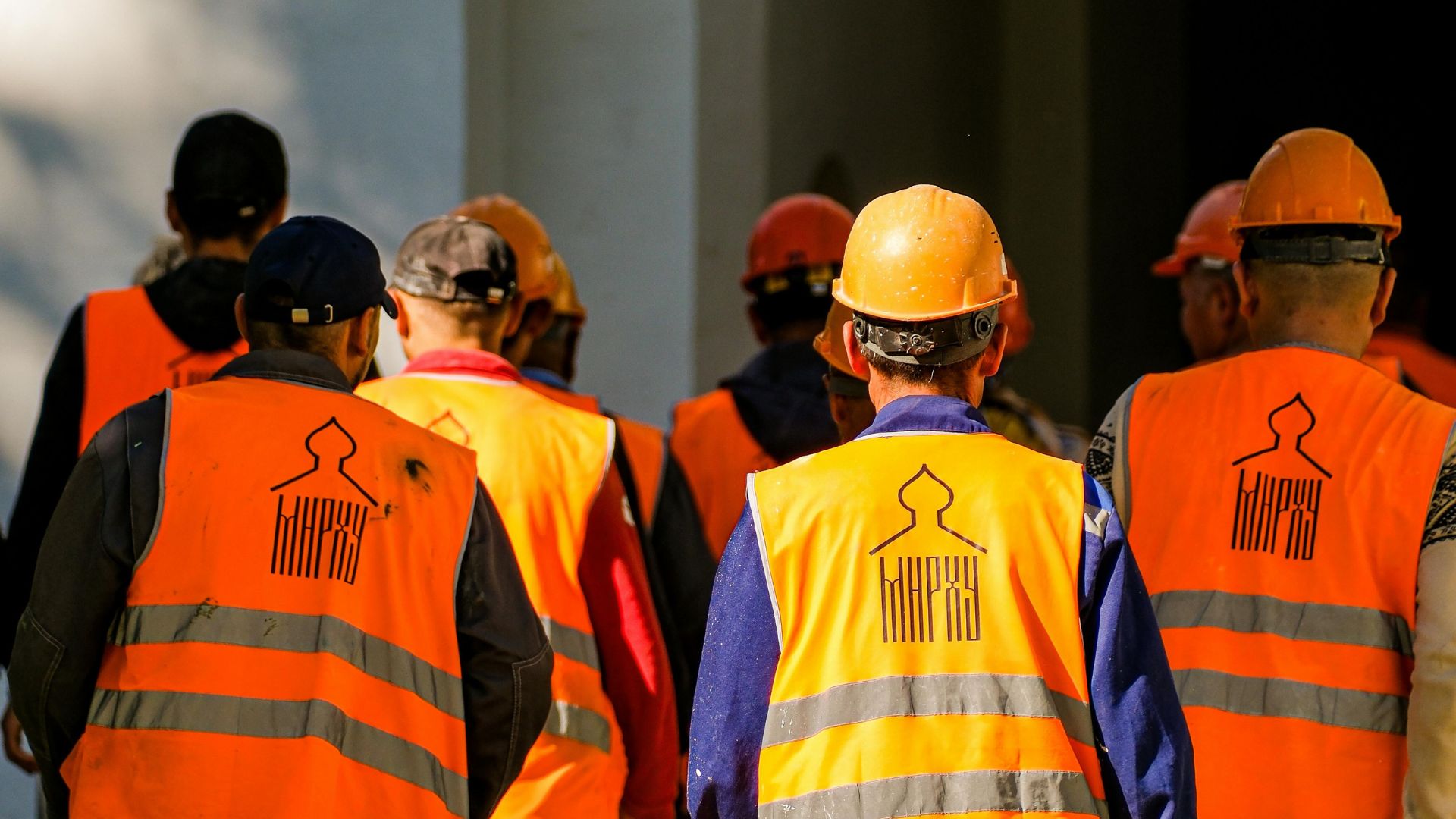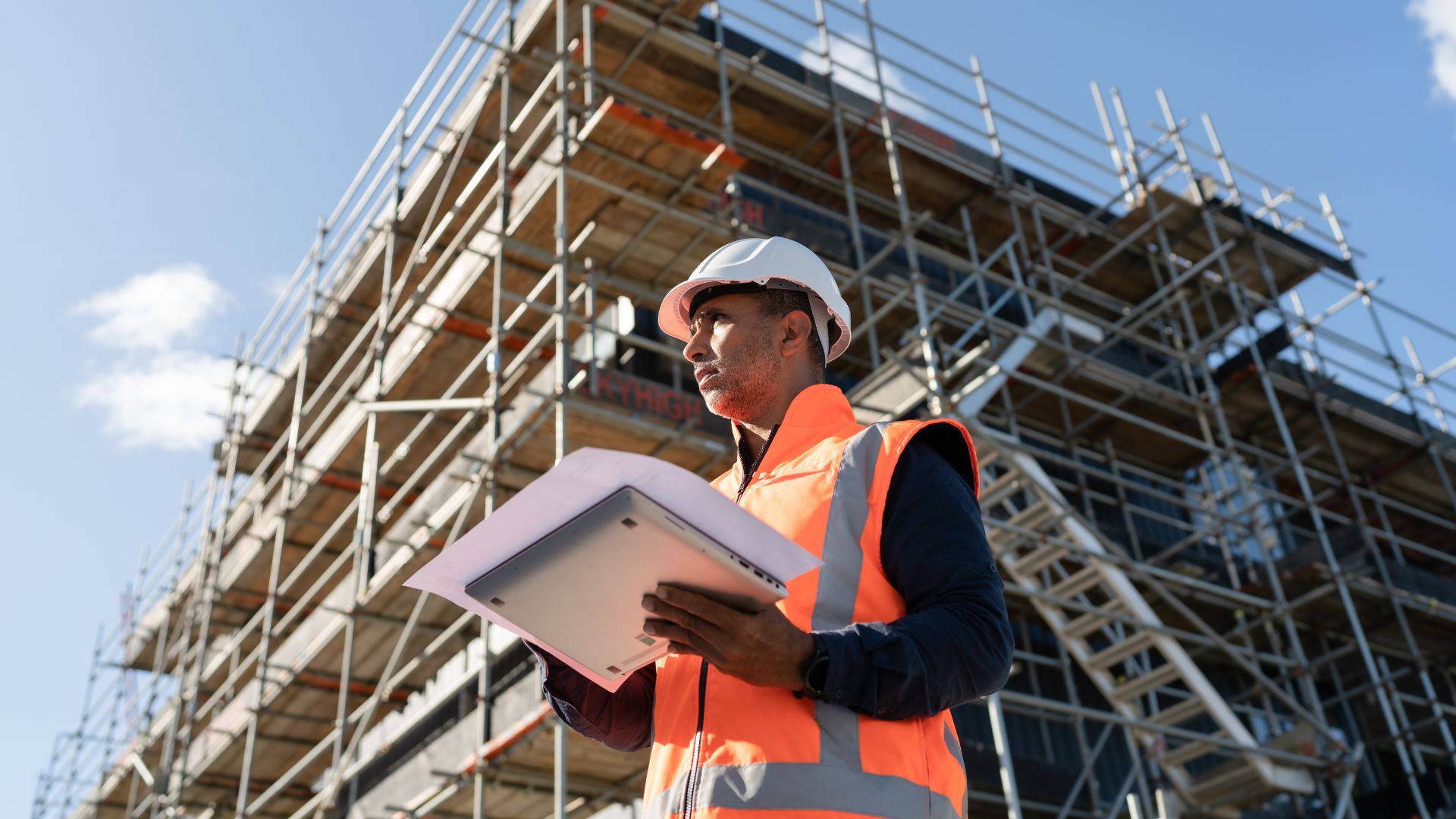


Did you know that around 2.3 million employees are involved in accidents at work every year?
An effective safety culture is a non-negotiable for industries like healthcare, construction, aviation, and manufacturing. Complex equipment, heavy machinery and potentially dangerous environments require safety to be a top priority. And establishing a culture of safety can help to decrease risk and support employee wellbeing.
This blog explores what a workplace safety culture is, why it’s important, its key characteristics, and how to create a healthy and safe work environment.
Let’s get started!
What is a culture of safety at work?
The Health and Safety Laboratory defines safety culture as “...a combination of the attitudes, values, and perceptions that influence how something is actually done in the workplace, rather than how it should be done”. Without engagement and adherence, the policies and systems that are designed to create a safe working environment become ineffective.
A culture of safety is especially important in high-risk working environments where accidents are more likely to happen. In the vast majority of countries, employers are legally required to protect their employees, and others, from harm. An effective safety culture minimizes risk by ensuring everyone across the organization is involved, engaged, and empowered.
Safety should always be prioritized over productivity.
And the benefits of prioritizing employee safety and wellbeing reach far beyond decreased risk, reduced accidents, and legal adherence. Being proactive about safety demonstrates respect for employees’ health and wellbeing, building trust that can lead to increased loyalty, engagement, and motivation.
Let’s look at some of these benefits in a bit more detail.

Why is it important to prioritize a culture of safety at work?
There are lots of tangible benefits to prioritizing a culture of safety at work. While some are obvious, there are also secondary benefits that you might not necessarily accredit to a safety culture:
- Decreased accidents and injuries: First and foremost, a strong culture of safety helps reduce accidents and injuries at work. Increasing awareness and driving engagement with health and safety ultimately helps address risk and prevent workplace safety incidents. Never underestimate the power of culture!
- Legal and regulatory adherence: An effective safety culture makes it easier for an organization to adhere to safety-related regulations. Taking a ‘one team’ approach to workplace safety and ensuring employees are involved and engaged limits the risk of legal concerns or legislative issues.
- Lower employee absence and turnover: A decrease in workplace accidents and a clear commitment to employee health, safety, and wellbeing results in lower absence rates and turnover. Healthy employees who trust that their leaders genuinely care about their wellbeing are less likely to take frequent sick leave or to leave the organization altogether.
- Better reputation: We’ve all heard horror stories of organizations that don’t take safety seriously and put their employees – and the public – at risk. And the impacts of a damaged reputation are far-reaching, including client relationship issues and difficulties with recruitment and retention. Making safety a priority will strengthen your reputation as a positive and responsible employer.
- Improved productivity: While not everyone thinks of safety and productivity as going hand-in-hand, encouraging health and wellbeing can significantly increase employee motivation and productivity. Going above and beyond for a company that clearly cares about your wellbeing is much more appealing than for one who does not!
- More empowered leaders: Managers have the single biggest impact on both team impact and organizational performance, and a proactive culture of safety requires them to play a leading role. Empowering team leaders to hold accountability for things such as reporting, training, and decision-making helps strengthen leader relationships and build engagement.
The characteristics of a safety culture
So what does an effective culture of safety actually look like, in practice? There are certain characteristics that successful organizations adopt to embrace a safety culture that both engages and empowers their employees:
- Sharing accountability
- Providing regular safety training
- Communicating effectively
- Having the right procedures and systems in place
- Regularly asking for feedback
Let’s explore each of these characteristics to find out what’s involved in leading a culture of safety.
Sharing accountability
A culture of safety is not something that just comes from the top – it needs to be embraced and adopted by all employees.
Accountability for health and safety should be shared right across the organization. A positive safety culture is created by every employee being responsible for safety and wellbeing.
A ‘just culture’ is an approach commonly adopted in healthcare and aviation settings. It aims to create an environment of trust that promotes open and honest safety reporting and accountability to enable continuous learning from mistakes. The UK’s Civil Aviation Authority (CAA) explains –
“Civil aviation safety is sustained by a culture which fosters and facilitates the reporting of occurrences and advances the principles of a Just Culture. Our approach is one in which people are treated fairly and are not punished for actions, omissions or decisions taken by them that are commensurate with their experience and training”
Providing regular safety training
It’s critical to provide regular training on health and safety-related matters within all workplaces. Safety training should form part of the induction process for new joiners and should be refreshed regularly for existing employees.
Mandatory safety training must be engaging, accessible, and take place within working hours. Effective safety training will:
✅ Educate employees on health and safety matters that are specific to the organization
✅ Demonstrate the organization’s commitment to creating a positive safety culture
✅ Help achieve the organization’s legal duty to protect the health and safety of employees
Communicating effectively
Effective two-way communication is an essential characteristic of organizations that have a strong culture of safety.
Regular, clear, and engaging communication between frontline employees and leaders creates a positive feedback loop that ensures all parties are aware and informed of risks and procedures.
Construction is one of the most high-risk industries for employees, with tens of thousands of construction workers injured at work every year. Research exploring the importance of communication within the construction industry found that safety communication among construction workers is fundamental to effective safety management. The study highlighted that unexpected injuries often occur when employees do not sufficiently communicate relevant safety hazards and appropriate injury prevention measures.
Having the right procedures and systems in place
A strong safety culture is built upon the foundation of the organization’s safety procedures and reporting systems.
Organizations with an effective culture of safety have accessible, clearly-defined safety procedures and robust incident reporting systems.
Without a sound incident reporting system and clear procedures, many safety issues or incidents will be unreported resulting in missed opportunities to learn from mistakes. Being supported by the right procedures and having easy access to robust reporting systems will help employees to feel comfortable when reporting unsafe conditions or logging incidents.
Regularly asking for feedback
We’re big fans of employee feedback here at PepTalk, and not without good reason. Study after study shows that regularly asking employees for feedback – and acting on it – boosts engagement, strengthens relationships, and increases motivation.
Organizations rely on their employees to provide feedback from the front line that informs safety policies and processes. Simply having an incident reporting system in place isn’t enough. Employees should be directly asked for their feedback on a regular basis through both formal channels like employee surveys and informal channels like leader check-ins.
Utilizing employee feedback helps create a culture of safety by building trust and making safety policies more efficient.

5 ways to build a culture of safety in the workplace
There are a number of things you can do to achieve a culture of safety in the workplace. To get you started, we reviewed the evidence and characteristics of a safety culture to create the 5 ‘I’s of creating a culture of safety:
- Involve leaders from the start
- Ignite an open dialogue around safety
- Introduce solid procedures and systems
- Invest in employee training
- Improve and adapt on a regular basis
Let’s explore each of the 5 elements of a safety culture!
1. Involve leaders from the start
Achieving the buy-in and support of management teams from right across the organization is critical for any kind of cultural change. Leaders have the most significant influence over the broader workforce, so ensuring they are involved and aligned will help present a consistent message to employees.
Involving leaders from the start helps create influential safety advocates who are able to cascade important messaging to their teams.
You can keep the leadership population involved and engaged through regular communications, leader drop-ins, workshops, and listening sessions.
2. Ignite an open dialogue around safety
As we explored earlier, effective communication is one of the most important characteristics of organizations with a strong safety culture. Although it’s important to keep employees informed about policies, updates and process changes, igniting an open dialogue is a two-way street. It is just as much about listening as it is about informing.
An open dialogue around safety includes:
🛟 Informing employees about important updates and policies
🛟 Regularly asking for feedback and suggestions relating to safety
🛟 Including safety-related topics in day-to-day messaging, including in team meetings
🛟 Responding to employee feedback, communicating actions and next steps
3. Introduce solid procedures and systems
Getting your organization up and running with robust procedures and incident reporting systems is an important step.
But it’s not enough to just launch a new system or platform and then hope for the best.
Treat the introduction of new safety procedures and systems in the same way you’d treat the launch of a new benefits platform. Make sure you have an engaging launch plan, system champions, and competitions or rewards that incentivize employees to get involved and familiarize themselves with the new system.
4. Invest in employee training
One way to demonstrate your commitment to safety is to invest in employee training that is both educational and engaging. The Occupational Safety and Health Administration agrees, stating:
“Education and training are important tools for informing workers and managers about workplace hazards and controls so they can work more safely and be more productive.”
Depending on roles and the level of risk within the organization, training can take place online or in person. The content must be tailored to the specific safety challenges faced by the organization, rather than generic safety information that feels irrelevant to employees.
5. Improve and adapt on a regular basis
Last but certainly not least, a culture of safety is supported by a continual loop of feedback and improvement. Processes, policies, and employee feedback should all be reviewed on a continuous basis to ensure necessary changes are made.
Making regular updates and safety improvements to procedures based on real-life experiences and reports from employees shows that you are listening and that you truly value employee input.
It also shows that safety is a top priority, and the organization is not afraid to adjust its approaches to ensure employees are kept safe and well.
{{ Learn more with our Culture of Safety eBook here }}
Enhance workplace safety with PepTalk
A culture of safety relies on effective communication, team engagement, employee feedback, and strong leaders. PepTalk is here to help!
Our purpose-built Team Experience platform enables teams to engage and perform at their best, all while supporting a strong safety culture that has employee wellbeing at its heart.
Book a demo to find out what we offer.
Frequently Asked Questions
How can organizations foster a culture of safety?A culture of safety is characterized by shared beliefs, practices, and attitudes that prioritize safety. It involves everyone, from leadership to frontline employees, actively participating in safety initiatives.
Why is a culture of safety crucial for business success?Organizations can build a culture of safety by providing regular training, encouraging open communication about safety concerns, recognizing and rewarding safe behavior, and leading by example.
A culture of safety reduces the risk of accidents, boosts employee morale, and can lead to increased productivity and reduced costs. It also enhances the organization's reputation and can lead to better business outcomes.


See PepTalk in action


Related
Latest Blogs


See PepTalk in action





.webp)
.webp)


.webp)







.webp)